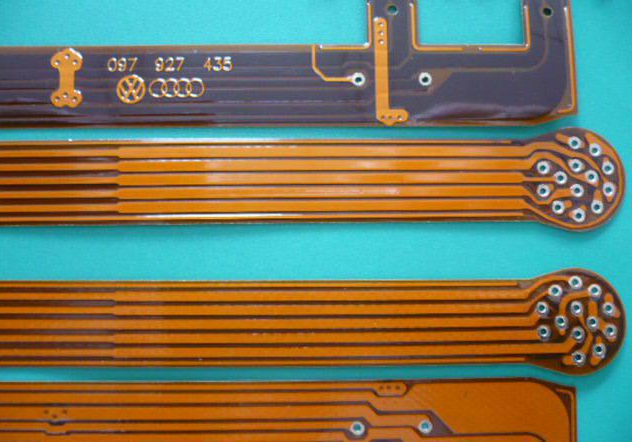PCB process Hot-Bar soft board design can not be ignored
Hot-Bar reflow (melting tin hot pressure welding), its most important function is to use the hot press head to melt the solder paste that has been printed on the electronic printed circuit (PCB), so as to connect two independent electronic parts. The method is to solder the flexible flat cable (FPB) to the electronic printed circuit (PCB).
Since the hot pressing head of the Hot-Bar machine is the only heat source, when the hot pressing head is pressed on the flexible flat cable (FPC), the heat must be transferred downwards to the electronic printed circuit board(PCB) to melt the printed circuit on the electronic printed circuit The solder paste on the board, so the flexible flat cable must have a thermal conductive design.
Generally speaking, making plating holes or vias on the solder pads is the most common heat conduction function design, as shown in the figure below. It is recommended to have three Vias or 2.5 Vias on the solder pad of each FPC. There is also an advantage to making electroplated holes. During the hot-press welding operation of molten tin, excess tin can be overflowed from the electroplated holes, so as not to cause a short circuit between the solder pads.
The flexible flat cable should be affixed with double-sided tape to fix the flexible flat cable on the electronic printed circuit board, because the operator is unlikely to hold the FPC with his hands until the Hot-Bar reflow is completed. In addition, the problem of unstable quality may also occur.
Summarize the design requirements of FPC as follows. It is better to have three plated holes or via holes on the solder pad of each FPC, at least two + half plated holes or via holes.

Stick double-sided tape on the side of the flexible flat cable (FPB) that is attached to the electronic printed circuit board. The thickness of the double-sided tape should be less than 0.15mm, and the distance from the edge of the FPC pad to the double-sided tape should be 0.20mm. the distance.
The recommended Hot-Bar soft board size design is as follows:
The aperture of the via hole is 0.4mm
Through hole center to center is 1.2mm
The distance from the center of the pad to the center is 1.8mm
The pad width is 0.9mm
In order to avoid stress concentration from breaking the flexible flat cable, it is strongly recommended to stagger the edge of the cover film (polymide) of the flexible flat cable.
In order to cooperate with Hot-Bar operation and avoid pressing or damaging the parts, the following is the recommended limit size of the parts:
The minimum dimension from the part to the front edge of the FPC is 2.0mm.
The minimum size of the part to the left and right edges of the FPC is 3.0mm.
When the FPC is extended outwards, a minimum space of 5.0mm should be reserved so that the FPC can be pasted on the printed circuit board. You can also consider making positioning holes on the FPC, and designing alignment pins (Alignment Pins) on the hot press fixture for positioning, which can save space on the double-sided tape and the printed circuit board, but accuracy must be considered.
The minimum size of the parts under the FPC to the rear edge of the FPC is 10.0mm (in order to ensure that the double-sided adhesive can be pasted on the printed circuit board).